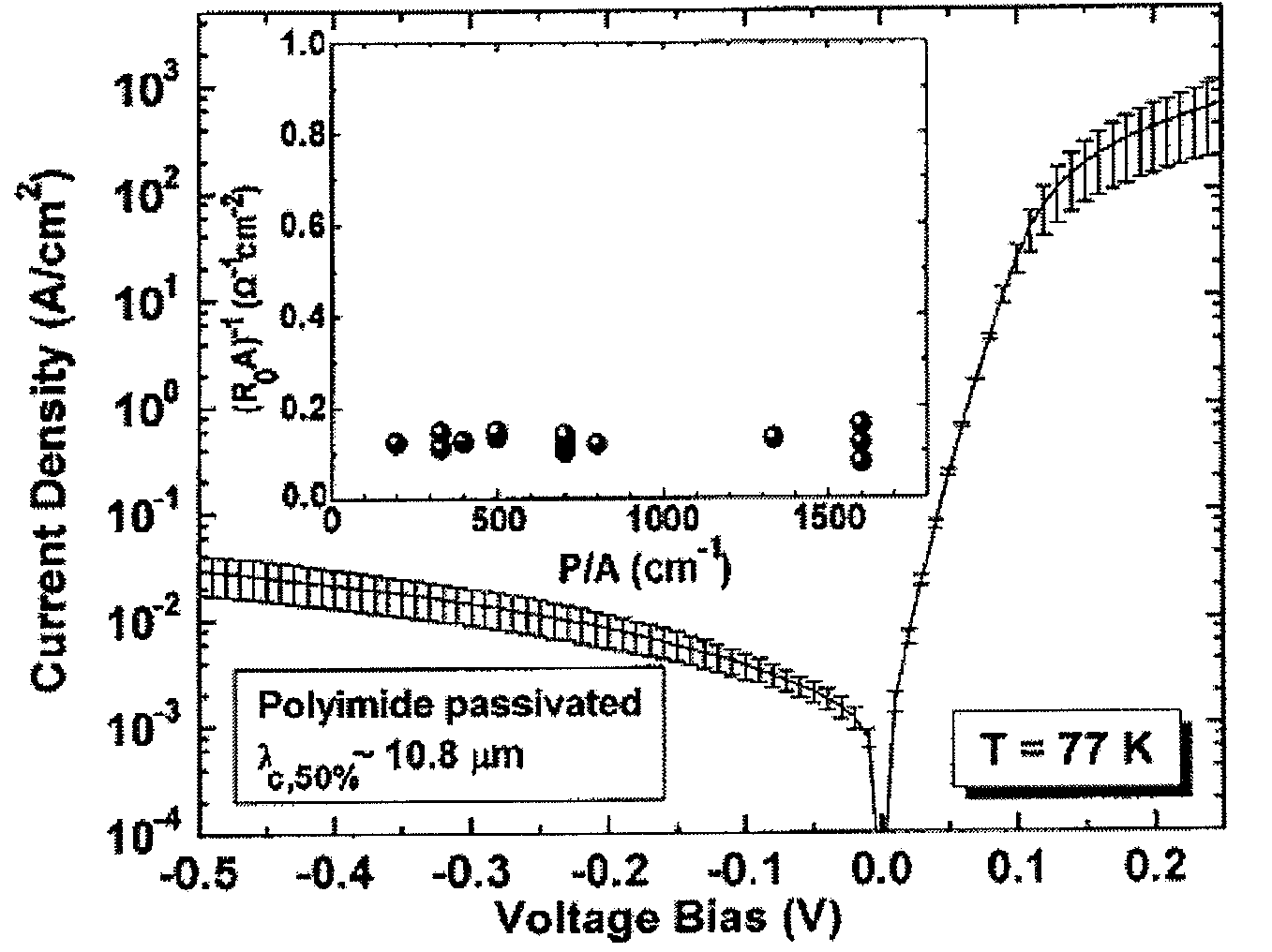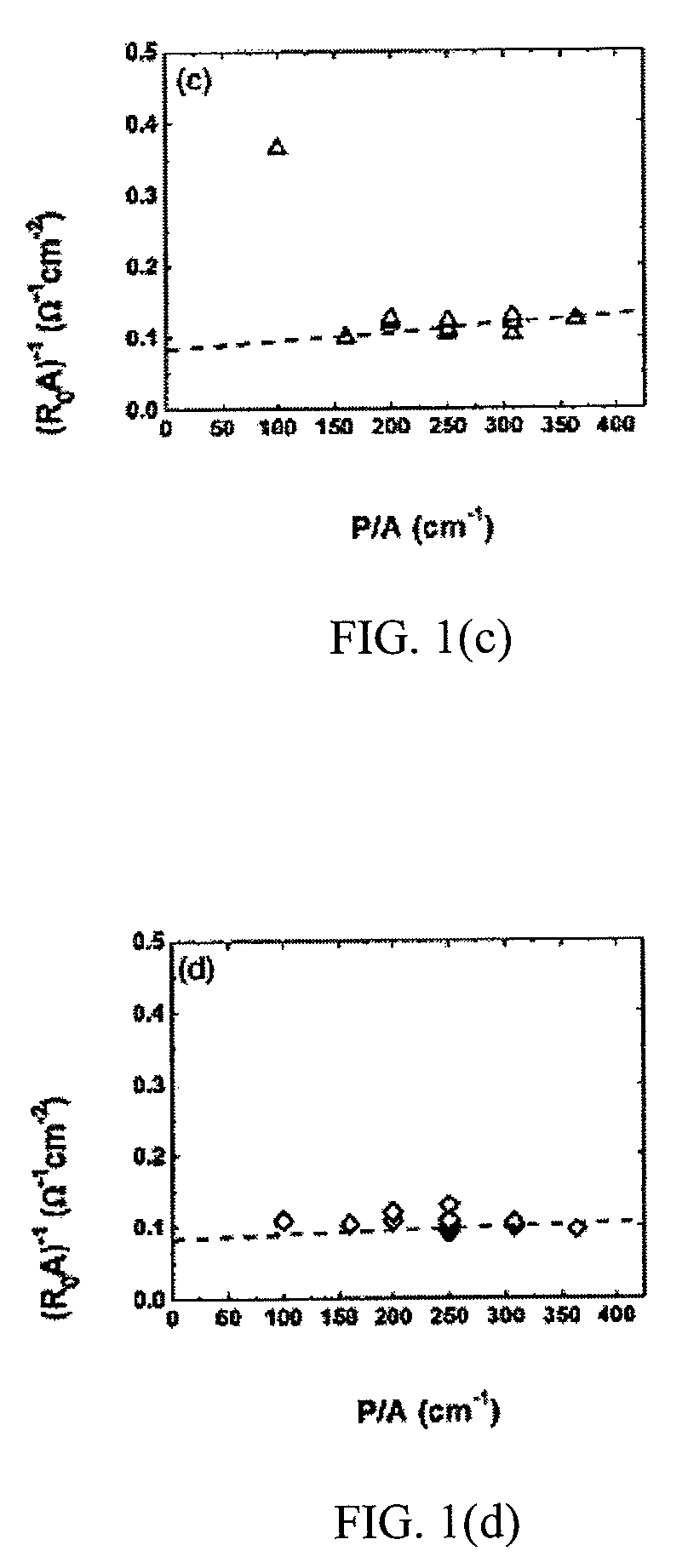Superlattice photodiodes with polyimide surface passivation
a surface passivation and photodiode technology, applied in the field of infrared focal plane arrays, can solve the problems of poor uniformity, high cost and complex process of molecular beam epitaxy, and increase the surface resistivity of polyimide passivated photodiodes
- Summary
- Abstract
- Description
- Claims
- Application Information
AI Technical Summary
Benefits of technology
Problems solved by technology
Method used
Image
Examples
example
[0025]FIG. 1(a) shows a plot of the inverse of the zero-bias resistance area product versus the perimeter to area ratio for unpassivated diodes (sample A), measured immediately after the last cleaning step of the fabrication process. A considerable degree of nonuniformity in the RoA value at 77 K was observed. A linear least squares fitting (LLSF) was conducted while fixing the bulk RoA value (P / A=0) to 12.4 Ω·cm2, as extracted from a LLSF of a more uniform distribution of experimental values [FIG. 1(c)]. The surface resistivity was extracted to be 1.6×103 Ωcm.
[0026]The same sample was then warmed to room temperature and allowed to remain under a vacuum of approximately 10−3 Torr, for 12 hours, after which time it was cooled to 77 K and measured again (sample B). FIG. 1(b) shows the resulting (RoA)−1 values. The fitting of these data resulted in a slightly higher surface resistivity of 2.1×103 Ωcm than the as-processed sample, and the standard deviation of the RoA values decreased...
PUM
 Login to View More
Login to View More Abstract
Description
Claims
Application Information
 Login to View More
Login to View More - R&D
- Intellectual Property
- Life Sciences
- Materials
- Tech Scout
- Unparalleled Data Quality
- Higher Quality Content
- 60% Fewer Hallucinations
Browse by: Latest US Patents, China's latest patents, Technical Efficacy Thesaurus, Application Domain, Technology Topic, Popular Technical Reports.
© 2025 PatSnap. All rights reserved.Legal|Privacy policy|Modern Slavery Act Transparency Statement|Sitemap|About US| Contact US: help@patsnap.com



